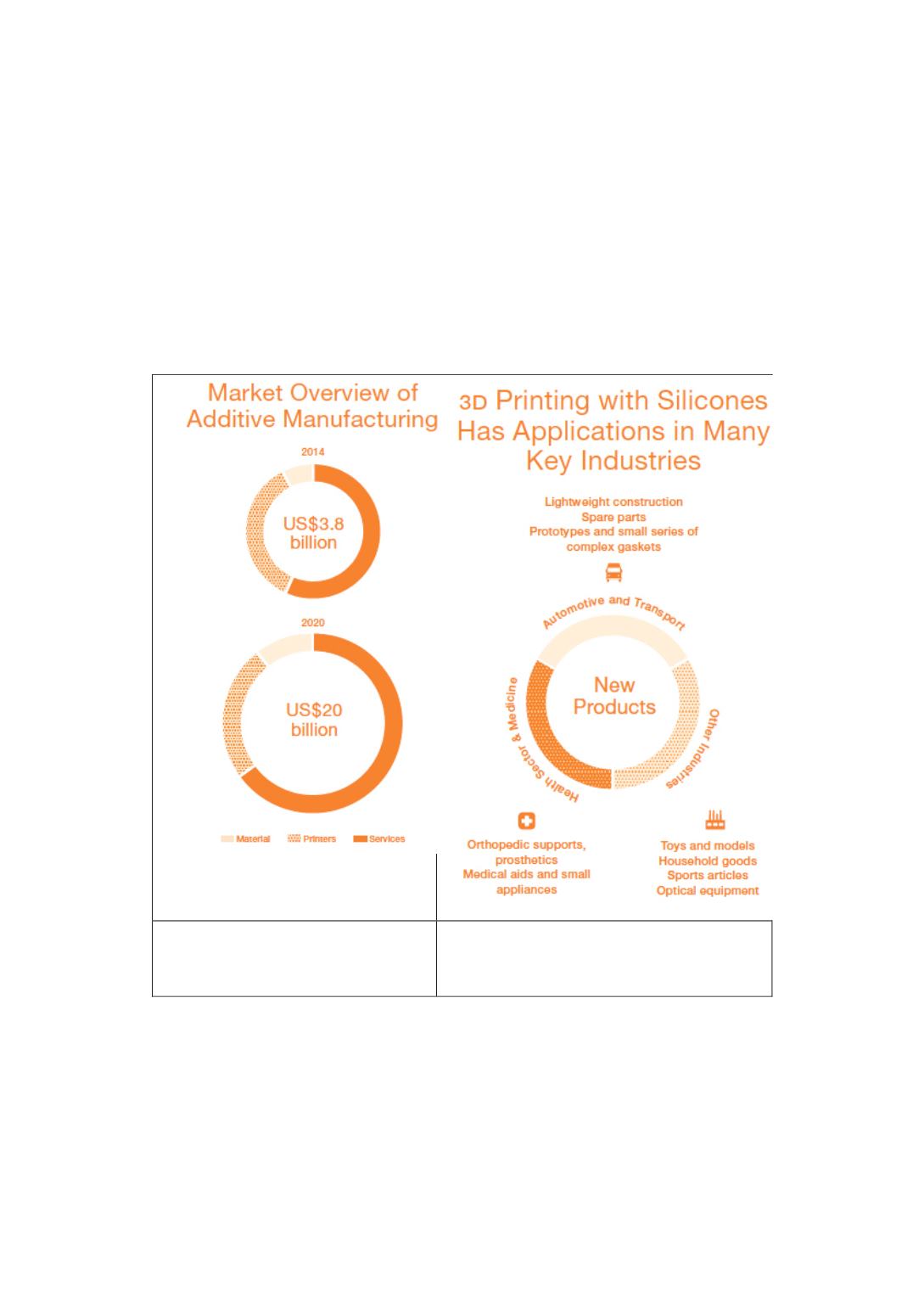

New silicones
There are new silicone applications that could represent a frog-leap in the consumption
of metallurgical silicon. The one we expect that will be the most important is its use for
3D printing to manufacture prototypes, spare parts and much more. 3D Printing is based
on materials such as thermoplastics (which are melted before applying), metals and
ceramics. In 2015, the German company Wacker revealed that the have developed a new
silicone suitable to be used for 3D printing machines. This is a first step because for the
moment the main application will be prototyping although there are plenty of
opportunities, as long as the technique is developed, there will be more applications in
the Health sector and Medicine, Automotive and Transport and Other Industries.
&ŝŐƵƌĞ ϭ
͘
DĂƌŬĞƚ ĞǀŽůƵƚŝŽŶ ŽĨ ϯ ƉƌŝŶƚŝŶŐ
ƐĞĐƚŽƌ ;ƐŽƵƌĐĞ͗ tĂĐŬĞƌ ŚĞŵŝĞ ' YϮ ϮϬϭϱ
ƌĞƉŽƌƚͿ
&ŝŐƵƌĞ ϭ
͘
EĞǁ ĂƉƉůŝĐĂƚŝŽŶƐ ĨŽƌ ϯ ƉƌŝŶƚŝŶŐ ǁŝƚŚ
ƐŝůŝĐŽŶĞƐ ;ƐŽƵƌĐĞ͗ tĂĐŬĞƌ ŚĞŵŝĞ ' YϮ ϮϬϭϱ ƌĞƉŽƌƚͿ
In general, the silicone market is diversified across industries and applications such as
Performance Additives and Functional Ingredients, Construction, Consumer Care,
Coatings and so on. This is a growing market because it has a CARG 2005-2015 of 5%
and it represents a 11,5 billion euro industry. The 3D printing industry is growing at a
much faster pace of 30% annually so that in 2023 this sector could be one of the most
important within the silicone market.
17


















